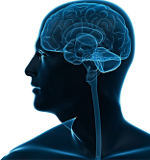The verdict is clear: diffusion tensor imaging demonstrates damage to the brain associated with mild traumatic brain injury
The weight of scientific evidence demonstrates that “diffusion tensor imaging” is an effective tool for demonstrating damage to the white matter of the brain associated with mild traumatic brain injury.
The damage typically associated with mild traumatic brain injury (mTBI) is in the axons, the microscopic fiber tracts in the white matter of the brain too small to be seen by conventional tools such as MRI and CT. In fact an individual with a perfectly normal MRI and CT could even be in a coma due to a brain injury. Treatment providers have been left to infer injury from clinical symptoms. However, even the most commonly used clinical tools, such as neuropsychological assessment, are generally seen as insensitive to the subtle, but sometimes life altering, effects of mTBIs.
In recent years scientists have developed and refined a new magnetic resonance (MR) sequence, known as “diffusion tensor imaging,” (DTI) which has proven to reliably detect damage in these microstructures of the brain. DTI works by measuring the distribution of water through portions of the brain and is based on the known physics of the flow of water. Healthy white matter in the brain creates barriers to the flow of water, which therefore moves unequally in all directions (called “anistropic distribution.”) However, when the white matter is damaged, the outer membranes are broken down, causing water to flow equally in all directions, (called “isotrophic distribution.”) DTI divides the brain into thousands of voxels and measures the distribution of water through each voxel, providing a score known as “fractional anistrophy” (FA). The FA for each voxel is then compared to the mean FA scores of a group of healthy volunteers. Significant deviations (more than two standard deviations) indicate damage, especially in areas of the brain known to be susceptible to axonal injury through trauma.
Needless to say, insurers and defendants have aggressively objected to DTI evidence of brain injury, since it provides additional “objective evidence” contradicting the theme used by the defense in almost every case: that because the majority of people appear to recover quickly from mTBI, those with persistent symptoms must be malingering (or suffering from some “psychological” problem.)
Diffusion Tensor Imaging and Traumatic Brain Injury
Prior posts in this blog have highlighted the increasingly compelling scientific evidence demonstrating that mTBI does, in fact, result in lasting sequelae in a substantial minority of patients and that these sequelae have a microstructural neuropathological origin. Having a tool that effectively measures this microstructural damage is a game changer, which understandably accounts for the defense objections to this evidence. Since 2006, defendants in 24 pending legal cases have sought to exclude this evidence. In each of those cases, the defense has lost and the evidence has been permitted, based on the overwhelming consensus in the peer reviewed literature that when used in conjunction with clinical information, DTI is, in fact, highly effective in demonstrating damage to the white matter of the brain associated with mTBI.
An excellent history of the attacks on using this technology, and the response to those attacks in the peer reviewed literature and in the courts, can be found in a recent article published by Dr. Manley Kilgore and attorney Dorothy Clay Sims in Brain Injury Professional, a publication of the North American Brain Injury Society. The article is titled “The Use of Diffusion Tensor Imaging to Assist in the Diagnosis of Traumatic Brain Injury.” The most recent peer reviewed discussion of the issue can be found in an article recently published in AJOB Neuroscience by Dr. Michael Lipton, Albert Einstein College of Medicine, and Dr. Erin Bigler, Brigham Young University, titled “Clarifying the Robust Foundation for and Appropriate Use of DTI in mTBI Patients.” Summaries of the peer-reviewed literature and affidavits of leading neuroscientists supporting the use of DTI can be found in the pleadings in the 24 court cases where this evidence has been permitted over defense objections.
Insurers and defendants will likely continue to deny the reality of persistent postconcussion symptoms and oppose use of scientific evidence demonstrating the physiological basis for these symptoms. The question must, however, be asked, “At what point is the evidence so clear that this strategy amounts to bad faith?”

